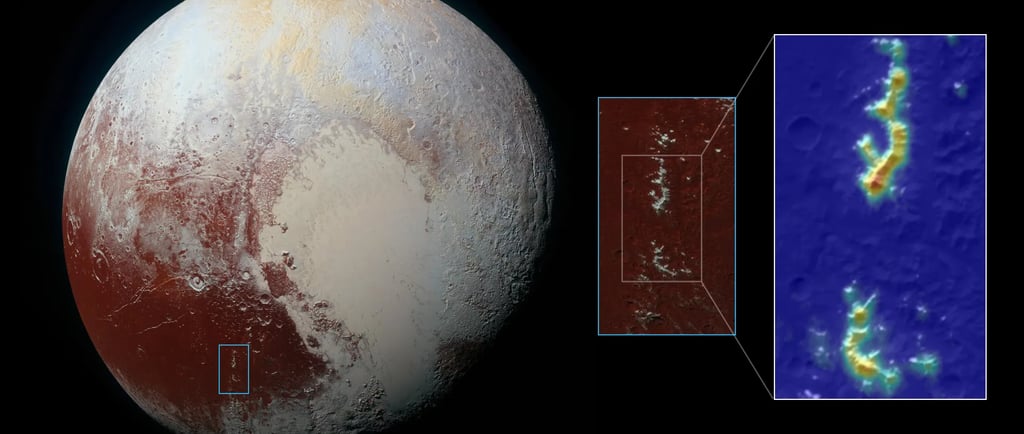The Ice-Capped Mountains of Pluto: A New Perspective


Introduction to Pluto’s Unique Landscape
The exploration of Pluto has unveiled some of the most fascinating geological features of our solar system. Among these, the ice-covered mountains have captured the interest of scientists and space enthusiasts alike. Unlike Earth’s majestic mountain ranges, which are primarily shaped by tectonic activity and erosion, Pluto presents a strikingly different narrative. The mountains discovered on Pluto are blanketed in methane ice, creating a visual resemblance to snowy peaks on our home planet.
The Science Behind Methane Ice Caps
Recent research conducted at NASA’s Ames Research Center has provided valuable insights into the formation of these mysterious ice caps. Utilizing advanced numerical simulations of Pluto’s climate, scientists have determined that the processes leading to the accumulation of methane ice differ significantly from those we observe on Earth. On Pluto, the extreme cold and unique atmospheric conditions facilitate the deposition of methane onto the mountainous surfaces, resulting in bright deposits that resemble freshly fallen snow.
Distinct Processes Shaping Pluto's Landscape
While the mountains on Earth are shaped through a combination of geological processes—such as plate tectonics, volcanic activity, and erosion—the same cannot be said for the icy summits of Pluto. The findings from NASA indicate that the icy peaks accumulate through a complex interaction of atmospheric phenomena and surface conditions. As Pluto experiences a highly elliptical orbit around the Sun, its climate varies dramatically over time, influencing the deposition and state of methane ice.
This research not only highlights the differences in planetary geology between Earth and Pluto but also sheds light on the processes at play on distant celestial bodies. Understanding how these processes work on Pluto enhances our knowledge of planetary climates across the solar system, offering clues on the potential for different forms of life beyond Earth and the evolution of other rocky planets.
Conclusion: Implications for Future Research
The discovery of these methane ice caps on Pluto is a testament to the complexities and wonders of our universe. This new understanding encourages further exploration, not only of Pluto but also of other icy worlds throughout the solar system. As we continue to unlock the secrets of our celestial neighbors, the findings underscore the importance of research and observation in expanding our comprehension of planetary science. The striking beauty of Pluto’s ice-capped mountains serves as a reminder of the myriad processes that govern planetary formation and evolution, inviting scientific inquiry to further unravel their mysteries.
